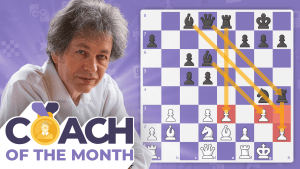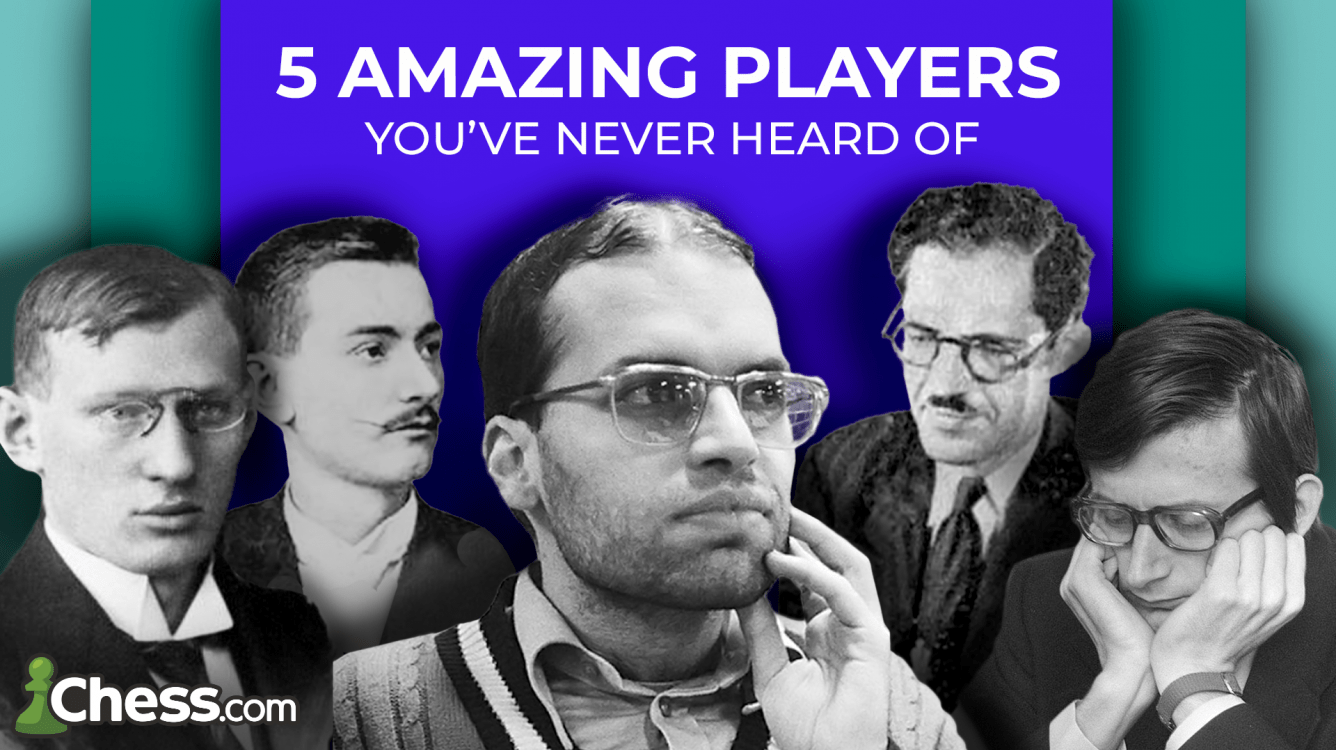
5 Amazing Chess Players You've Never Heard Of
There are many well-known world champions, challengers, candidates, world-class players, national champions, and grandmasters in chess circles. The best players our game has ever seen are constantly celebrated and for good reason! However, there are many fantastic players that most chess fans have never heard of before that deserve more attention than they receive.
None of the remarkable players on this list are considered "household" chess names due to various issues outside of their control, but they have all made large contributions to the royal game—with theoretical ideas that have stood the test of time, with their magnificent games, or both.
Without further ado, here are five under-appreciated yet amazing players that most have never heard of:
Rudolf Charousek
Rudolf Charousek was a Hungarian master and one of the top-10 players in the 1890s. In 1893, he entered a correspondence tournament and shared first with Geza Maroczy. In the same year, he played an incredible game with a memorable checkmate. Can you find the mate in three after 16...Nc6?
Charousek made his international debut at the 1896 Nuremberg tournament. It was at this tournament that he defeated the World Champion Emanuel Lasker—as far as I can tell, he is the only player in the history of the game to defeat the world champion while using the King's Gambit in a tournament game:
Charousek tied for first place in the 1896 Budapest tournament alongside Mikhail Chigorin. In the following year, he won the 1897 Berlin tournament ahead of 19 chess masters including three future world championship challengers: David Janowsky, Carl Schlechter, and Chigorin.
After these great performances, Lasker stated, "I shall have to play a championship match with this man someday." Unfortunately, Charousek passed away from tuberculosis at the young age of 26. He never got his chance at the title, but who knows—maybe Charousek could have been world champion?

Gyula Breyer
In the early 20th century, Gyula Breyer was a promising Hungarian master and world-class player. After winning the 1912 Hungarian Championship ahead of Richard Reti and other masters, he became one of the leading trailblazers of the Hypermodern school.
After World War I, Breyer won the 1920 Berlin tournament ahead of Reti, Maroczy, and two future world championship challengers GM Efim Bogoljubov and Siegbert Tarrasch. Here is a wonderful attacking game played by Breyer from this tournament where he defeats Maroczy with ease:
In 1921, Breyer played 25 blindfold games simultaneously, which was a world record at the time. His biggest contribution to chess theory is undoubtedly the variation of the Ruy Lopez that carries his name.
The Breyer variation of the Ruy Lopez is still played at the highest levels today. It has been used by some of the greatest players to play the game including multiple world champions: GMs Garry Kasparov, Magnus Carlsen, Viswanathan Anand, and Vladimir Kramnik.
Perhaps Breyer would have become a "household" chess name had his career continued, but he (like Charousek) passed away at a young age from a heart condition.
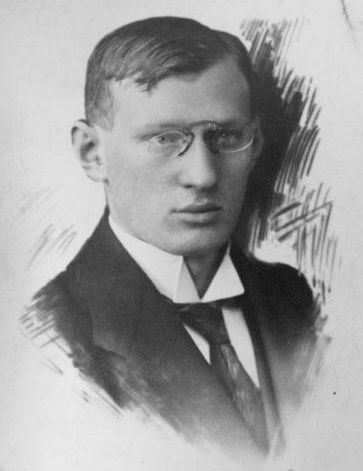
Isaac Kashdan
GM Isaac Kashdan was a world-class player and the top American player for years. He won the US Open twice and played first board for the American teams that won the Chess Olympiads in 1931, 1933, and 1937. Playing in five Olympiads, Kashdan earned a total of nine medals—this is still the record for an American player.
Kashdan was a virtuoso on the international scene in the early 1930s: He won the international tournament at Berlin in 1930, placed second behind Aaron Nimzowitsch at Frankfurt in 1930, won first place at the Stockholm tournament in 1930, and tied for first alongside World Champion Alexander Alekhine at Mexico City in 1932.
Kashdan's chess career slowed down due to economic difficulties during the Great Depression, and he sought other routes of employment to support his family. He still played at a high level, and in 1948, he played his immortal game—the sacrificial attack is legendary, and the smothered checkmate leaves a long-lasting impression:
Kashdan was awarded the title of grandmaster in 1954 (many years after his peak chess) and was a popular chess writer. In 1960 he earned the International Arbiter title and oversaw both of the Piatigorsky Cup tournaments. Later in life, he was an important administrator for the United States Chess Federation.
As the saying goes, life gets in the way of chess—Kashdan lived through World War I, had his peak chess years during the Great Depression, and then continued to play through World War II and beyond... Kashdan is an under-appreciated American chess hero.

Albin Planinc
GM Albin Planinc was a two-time Slovenian champion and world-class player. His first major success came in 1969 when he won the Ljubljana tournament ahead of nine grandmasters as an untitled player. After earning the grandmaster title in 1972, he tied for first alongside GM Tigran Petrosian at the Amsterdam IBM tournament in 1973 ahead of many grandmasters including GM Boris Spassky.
Planinc was on the brink of the world's top ten players in 1975 when he played a dazzling game for the ages. This game displays Planinc's incredible imagination and creativity—his queen sacrifice and king hunt leave quite an impression. Here is the game with annotations by NM Sam Copeland:
Like most of the players on this list, Planinc's story does not have a happy ending. His play began to decline in the late 1970s and after battling depression for many years he spent the final two decades of his life in a mental institution.
He departed this world at the age of 64 (the number of squares on a chessboard, as you know)—the same age that the chess giants GM Bobby Fischer and Wilhelm Steinitz passed away.
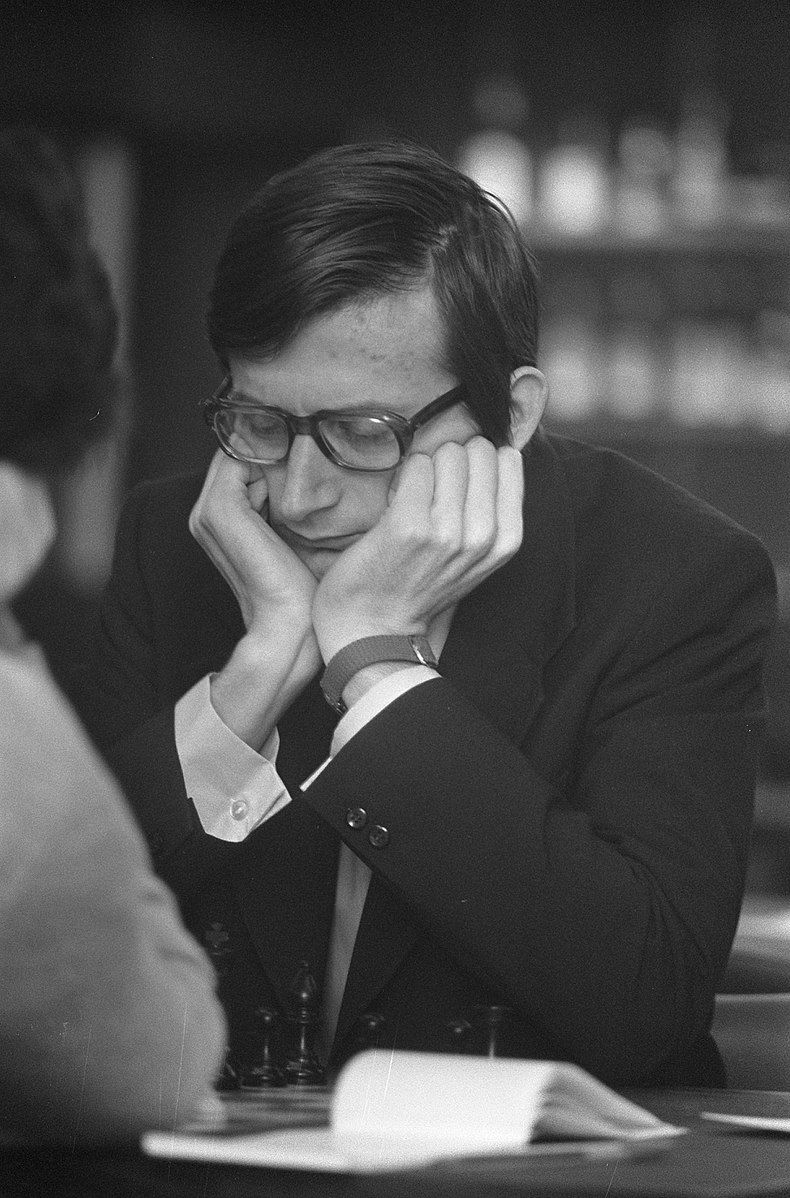
Henrique Mecking
GM Henrique Mecking was Brazil's first grandmaster and a world championship candidate. He peaked at number three in the world in 1978, behind only GMs Anatoly Karpov and Viktor Korchnoi.
Mecking won his first Brazilian championship at the age of 13, and he tied for first in the South American Championship in the following year. Here is a brilliant game example from Mecking that displays his great tactical abilities from a relatively quiet opening. The exchange sacrifice with 16.Rxd7! keeps Black's king in the center, and the pseudo-queen sacrifice 23.Qd4+ forces a delightful checkmate!
In 1973 he won the Petropolis Interzonal ahead of many chess legends including GMs Efim Geller, Vasily Smyslov, David Bronstein, Samuel Reshevsky, and more. Mecking made it to the quarterfinals of the Candidates Tournament, where he was defeated by Korchnoi.
Here is a game from his 1974 Candidates match with Korchnoi. Mecking uses a strong blend of tactics and positional play to win a pawn and grind out the win versus the mighty Korchnoi.
Mecking also won the Manilla Interzonal in 1976 ahead of a star-studded field that included Spassky. In the Candidates Tournament, he again made it to the quarterfinals. While playing in the 1979 Interzonal at Rio de Janerio, he became very ill and was forced to withdraw from the tournament. He was diagnosed with a rare neuromuscular disorder that took him a long time to recover from.
Mecking made a triumphant return to the 64 squares a dozen years later and continued to compete. In 2009, he drew a four-game match with the top Brazilian player GM Alexander Fier. In 2011, he placed third in the Brazilian championship and is rated 2553 as of September 2020.
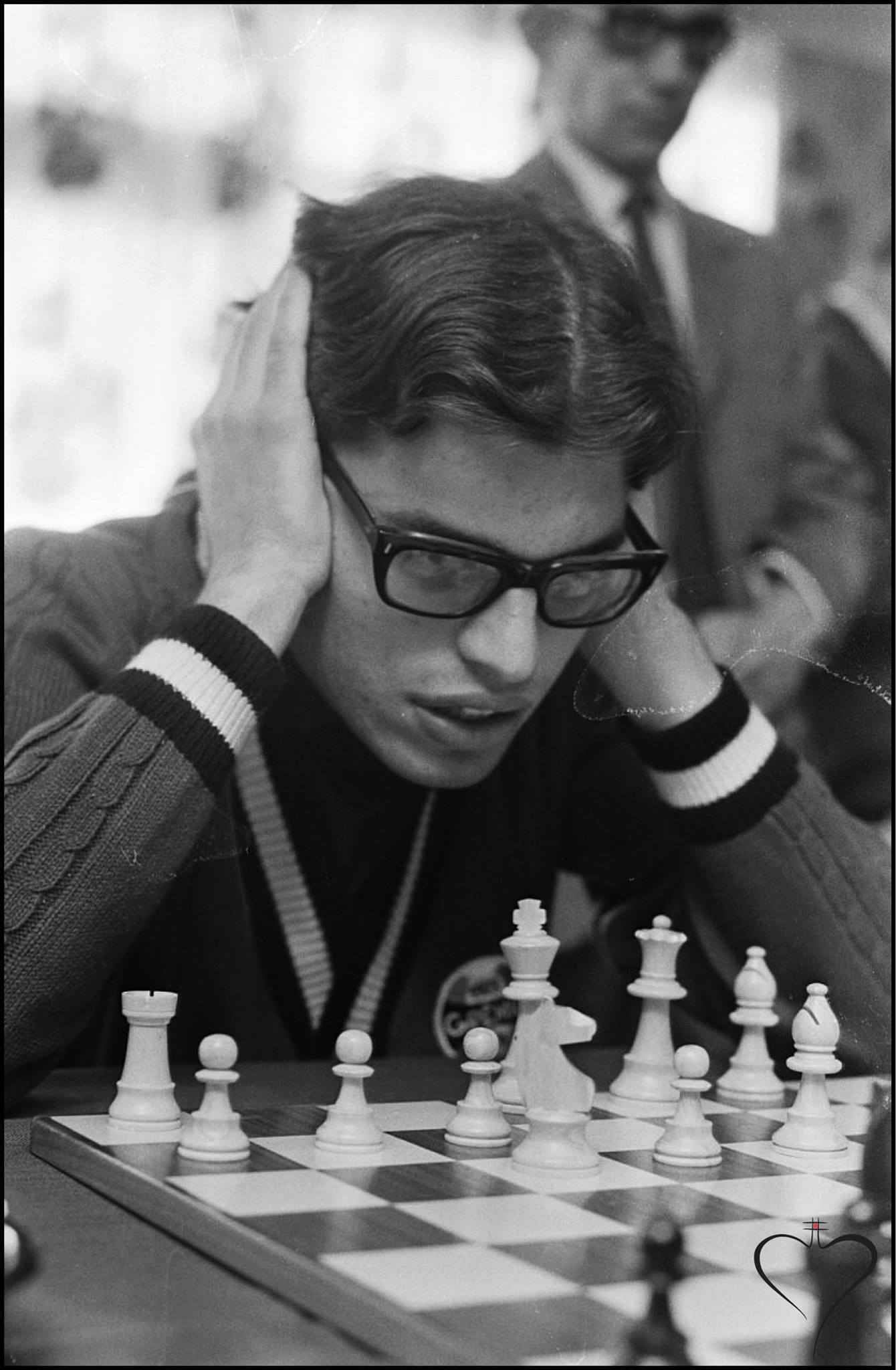
Conclusion
I find great pleasure in studying players from the past, especially those who achieved as much as the players on this list. All of these players dedicated most of their lives to the noble pursuit of chess and had to face terrible hardships in order to do so. I hope you enjoyed this brief look at these amazing players. Let us know your favorite player on this list in the comments below!
